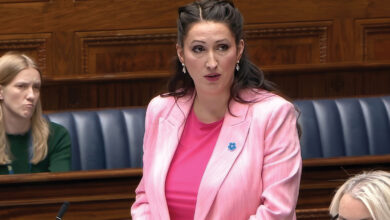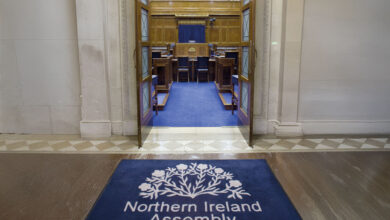The great data release
 Peter Cheney considers the pros and cons of the UK Government’s transparency plans. Statistics don’t tell the full story by themselves but can help the public ‘follow the money’.
Peter Cheney considers the pros and cons of the UK Government’s transparency plans. Statistics don’t tell the full story by themselves but can help the public ‘follow the money’.
“This is a landmark event in the life of this government and, I hope, all future governments,” David Cameron commented as he launched plans to put UK Government spending over £25,000 online. All contracts worth over £25,000 will follow early this year.
A DFP spokesman confirmed that it is considering whether to publish Northern Ireland departments’ spending items over £25,000. The department’s Central Procurement Directorate already publishes summary details of all contracts which it awards, including those under £25,000.
Cameron sees this as a radical move, being “open about what we do and crucially about what we spend” with members of the public “flagging up waste” and holding government to account. Ministers do not mind whether civil servants are embarrassed or not.
However, sceptics warn that the public could end up swamped by data and publishing numbers alone leaves out the context in which the money is spent.
Freeing up data for ‘armchair auditors’ based from home is part of the coalition’s cuts programme. Two thousand staff will lose their jobs as the Audit Commission is abolished over the next two years. The commission (which costs £213 million per year) audits England’s local government budgets and runs the UK-wide National Fraud Initiative.
The Government’s two main data release websites are data.gov.uk (launched under the Labour government) and transparency.number10.gov.uk
data.gov.uk is a comprehensive store of over 5,000 datasets, listed by publisher. A quarter of the sets (1,290) contain some reference to Northern Ireland. Entrepreneurs are encouraged to design apps using the data; over 100 are now available onsite.
Users can also run SPARQL queries, which search across linked data e.g. school locations in England. Developers can also discuss ideas on the site’s forum and wiki pages, or respond to official blogs.
transparency.number10.gov.uk includes:
• Details of UK Government spending over £25,000, broken down by supplier, type and area within the department;
• Organisation charts for each UK Government department (including staff numbers and salaries);
• Progress reports against departmental business plans; and
• Links to data sites across Whitehall.
Northern Ireland Office spending items for September 2010 ranged from £78.33 for minor works and maintenance at the Parades Commission to £74,456.50 for ‘central and common services’ at the Crown Solicitor’s Office.
Newsworthy expenses included HMRC’s £164,465 bottled water bill, and a chocolate truffle-making team-building event (£4,700) for Department of Business officials.
The site is open for comments, which generally criticise it for vagueness and not including enough background information.
More informed observers, though, have also warned about the lack of detail. Michael O’Higgins, who chairs the Audit Commission, accepts that ordinary citizens’ questions will be a “legitimate irritant” for government departments but adds that data are, in themselves, not enough.
Data “[need] context to become information”. Put simply, it doesn’t tell the full story. It is not clear if a consultant’s fee is good value for money unless that we know what it was for, and how much was paid out in the past.
Information Commissioner Christopher Graham was much more enthusiastic, heralding “a new and exciting chapter for freedom of information or what could be called FOI version 2.0.” The “transparency agenda” presented a “great opportunity to take information rights to the next level”.
Licensing for public sector information was relaxed in September, so developers could re-use more easily. The simplified ‘open government licence’ applies across the UK and allows the user to copy, publish, distribute, transmit and adapt the information, which can then be exploited commercially.
Sources must be acknowledged and the product must not mislead nor suggest that it has official status. Existing intellectual property rights and laws (e.g. the Data Protection Act) are unaffected. A lot of data are also exempt e.g. personal data, leaks, logos and identity documents.
Limits
Transparency, of course, needs to be balanced against privacy and security.
Just before the spending data release in November, the Government gave journalists compensation for miscarriages of justice (worth £2.2 million), including the names of those involved. This was due to be published but the Ministry of Justice spotted the mistake and removed it on data protection grounds.
The pre-released data also included details of a Ministry of Defence payment connected to Libya. Its press office later called journalists, asking them to ignore that particular line. Some NIO data is also withheld for security reasons.
A review of how transparency affects privacy was launched in December, after much data had already been released. Its report is expected in March. Jigsaw identification, where an individual can identified by piecing several bits of information together is one of the risks.
Data release could also mean losing money. The Met Office and Companies House are government-owned companies which generate a commercial income rather than receiving grant funding. The data belonging to these trading funds could be released by a ‘public data corporation’ from next April, and the Government is deciding how much data will be made available for free.
The Ordnance Survey, which is especially strict on copyright, picked a fight over this in 2009. Internet inventor Tim Berners- Lee asked Gordon Brown to release the organisation’s data free-of-charge as it linked into other datasets. The release took place but, as a compromise, the Ordnance Survey is now partly funded by taxpayer.
Apps to map Northern Ireland
expendituremap
posted by: Ian Shortman purpose: visualises public spending across the UK by region, sorted by spending type and year link: ishortman.com/projects/expendituremap
Post Box Finder
posted by: Matthew Somerville purpose: locates ‘unlocated’ postboxes (Royal Mail supplied a list of every location but not exact co-ordinates so viewers are asked to feed in their own data) link: www.dracos.co.uk/play/locating-postboxes
CycleStreets
posted by: Martin Lucas-Smith purpose: plans routes from A to B anywhere in the UK (photos of problems or good practice are welcome) link: www.cyclestreets.net
Local openness
Whitehall’s drive towards data release means that Northern Ireland public sector is comparatively less open than its Whitehall counterparts. agendaNi asked the Department of Finance and Personnel, responsible for public sector IT, whether it planned to follow the UK Government’s example.
The Northern Ireland Civil Service publishes many of its internal documents online, although the level of detail varies from department to department. The most recent operational plan on OFMDFM’s site covers 2007-2008.
Examples include publication schemes (as required by the Freedom of Information Act), corporate and business plans, performance reports against public service agreements, departmental board minutes and organisation charts. Much of the Civil Service’s statistical data have been released through www.data.gov.uk
All centres of procurement excellence use the eSourcing NI system to advertise contracts valued at over £30,000. Procurement by these centres and individual departments is summarised in an annual report to the Procurement Board, chaired by the Finance Minister.





